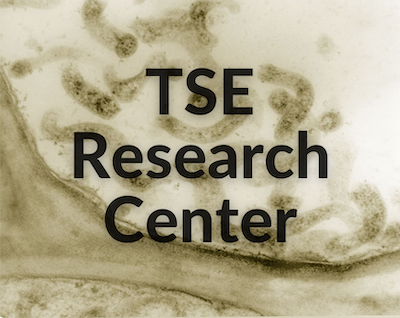Dr. Bastian has been researching the pathogenesis of the transmissible spongiform encephalopathies (TSE) for over four decades. He grew up in Saskatchewan, Canada (a current hotbed of the ongoing panzootic of chronic wasting disease (CWD), a rapidly spreading TSE in deer, moose, and elk populations. CWD was discovered to have spread from Fort Collins, Colorado to currently involve 29 States and four Canadian provinces). CWD has also a global presence involving deer populations in Europe and recently found in reindeer herds in Sweden and Norway. CWD is also affecting the cervid population in South Korea. Dr. Bastian is a Neuropathologist trained under Professor Steven Vogel at Duke Medical School in Durham NC (1968-1972).
In the 1960s the transmissible agent of scrapie (a TSE known for over 300 years in sheep) would not pass through a 100 nanometers filter (the size of a large virus thus the idea of a slow virus disease- a Herpes virus measures 140 nanometers in diameter and is easily visualized by Electron Microscopy [EM]).
After finishing his training at Duke, and a productive fellowship with Alan Rabson at the National Institutes of Health (NIH) in Bethesda MD, involving studies of latency of Herpes viruses in brain and spinal cord, he assumed a position of Assistant Professor of Pathology and Neuropathology at Baylor College of Medicine in Houston, TX. At this juncture, Dr. Bastian diagnosed a case of Creutzfeldt Jakob disease (CJD) which is a fatal TSE in humans by brain biopsy. Since the brain tissues in the brain biopsy were ideally prepared for ultrastructural study, he used his expertise in EM to search for morphological evidence of the TSE transmissible agent, which as mentioned above was virus-like in size. After extensive search, he found a helical bacterium in the CJD-affected brain biopsy tissues that closely resembled a group of phytopathogens (Spiroplasma spp.) recently described by Dr. Joseph Tully, Head of the Mycoplasmology Section at the NIH.
Subsequently Dr. Bastian moved to University of Maryland in Baltimore, MD and set up a close relationship with Dr. Tully at the nearby NIH to pursue his quest and study the biology of these novel organisms. He set up a Spiroplasma laboratory at University of South Alabama as Professor and Director of Neuropathology. During his tenure at USA he established a link between spiroplasma and the TSEs using molecular studies including PCR. He published a comprehensive book on CJD and the other TSEs while on faculty. Dr. Bastian moved his laboratory after Katrina to Department of Veterinary Science at the LSU Agriculture Center where he conducted experiments in small ruminants wherein he completed Koch’s postulates regarding proof of concept that a novel spiroplasma was the cause of TSEs. He then had a research breakthrough in his laboratory wherein he was able to isolate the novel spiroplasma from TSE-affected tissues including CJD, scrapie and CWD into cell-free media and as colonies on agar plates. He showed that the spiroplasma TSE isolates were resistant to boiling, radiation and formalin fixation (an extreme thermoacidophilic bacterium) consistent with the known biological properties of the TSE transmissible agent. All these studies are recorded in peer-reviewed publications. His laboratory is currently established in the AMRI business complex on the University of New Orleans (UNO) campus. Dr. Bastian is currently Research Professor at UNO and Tulane Medical School.

